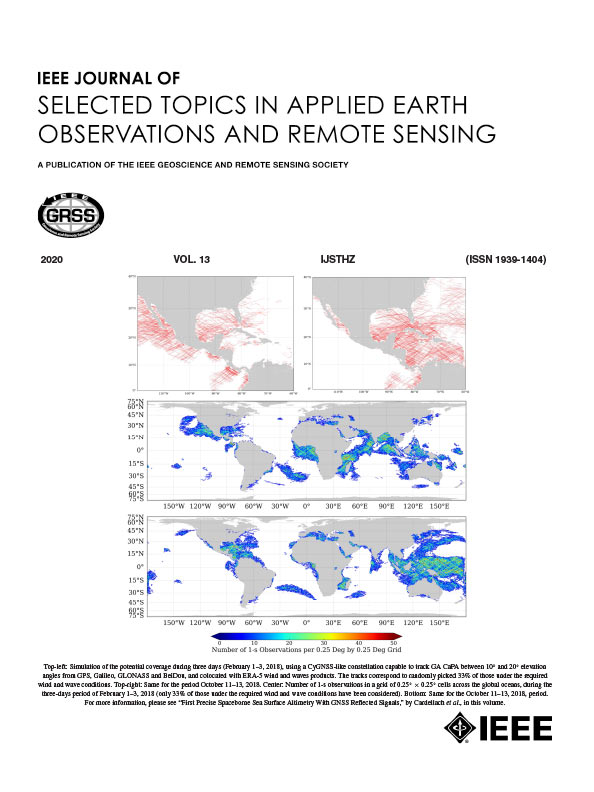从多个观测点组织视图的框架:启用双向景观可见性信息查询
IF 5.3
2区 地球科学
Q1 ENGINEERING, ELECTRICAL & ELECTRONIC
IEEE Journal of Selected Topics in Applied Earth Observations and Remote Sensing
Pub Date : 2025-08-25
DOI:10.1109/JSTARS.2025.3602482
引用次数: 0
摘要
视域分析在景观评价和管理中具有重要的应用价值。然而,目前的研究面临着双重限制:多个观测点的视图组织效率低下,无法分析多个观测点与地面单元之间的双向可见性关系。本研究开发了一个三维张量(观测点-行-列),该张量集成了景观单元和地面单元之间的详细可见性关系,并提出了一个支持双向查询的多观测点视图组织框架。该框架实现了三个阶段的优化策略:1)观测点维度数据的十进制编码,2)从地面单元到观测点集的映射机制,3)基于游程编码的映射数据组织。实验结果表明,当使用ASCII存储格式时,该框架在保持相当的查询效率的同时,与传统的视图矩阵方法相比,存储空间减少了98%,存储需求与NetCDF格式相似。此外,使用7-Zip压缩,框架实现了进一步的空间节省:相对于viewshed矩阵方法减少了40%,与NetCDF格式相比减少了70%。该研究不仅丰富了多观测点视点分析的理论,而且为地理信息产品开发提供了技术参考,对景观保护和规划具有重要的应用价值。本文章由计算机程序翻译,如有差异,请以英文原文为准。
Framework for Organizing Viewsheds From Multiple Observation Points: Enabling Bidirectional Landscape Visibility Information Queries
Viewshed analysis holds significant value in landscape assessment and management. However, current research faces dual limitations: inefficient organization of viewsheds from multiple observation points and inability to analyze bidirectional visibility relationships between multiple observation points and ground cells. This study develops a 3-D tensor (observation point–row–column) that integrates detailed visibility relationships between landscape units and ground cells and proposes a framework for organizing viewsheds from multiple observation points that supports bidirectional queries. The framework implements a three-stage optimization strategy: 1) decimal encoding of observation point dimension data, 2) a mapping mechanism from ground cells to observation point sets, and 3) run-length encoding-based organization of mapping data. Experimental results demonstrate that when using ASCII storage format, the framework achieves a 98% storage space reduction compared to conventional viewshed matrix methods while maintaining comparable query efficiency, with storage requirements similar to those of NetCDF format. Moreover, with 7-Zip compression, the framework achieves further space savings: a 40% reduction relative to viewshed matrix methods and a 70% reduction compared to NetCDF format. This research not only enriches the theory of multiple-observation-point viewshed analysis but also provides technical reference for geographic information product development, offering important application value for landscape conservation and planning.
求助全文
通过发布文献求助,成功后即可免费获取论文全文。
去求助
来源期刊
CiteScore
9.30
自引率
10.90%
发文量
563
审稿时长
4.7 months
期刊介绍:
The IEEE Journal of Selected Topics in Applied Earth Observations and Remote Sensing addresses the growing field of applications in Earth observations and remote sensing, and also provides a venue for the rapidly expanding special issues that are being sponsored by the IEEE Geosciences and Remote Sensing Society. The journal draws upon the experience of the highly successful “IEEE Transactions on Geoscience and Remote Sensing” and provide a complementary medium for the wide range of topics in applied earth observations. The ‘Applications’ areas encompasses the societal benefit areas of the Global Earth Observations Systems of Systems (GEOSS) program. Through deliberations over two years, ministers from 50 countries agreed to identify nine areas where Earth observation could positively impact the quality of life and health of their respective countries. Some of these are areas not traditionally addressed in the IEEE context. These include biodiversity, health and climate. Yet it is the skill sets of IEEE members, in areas such as observations, communications, computers, signal processing, standards and ocean engineering, that form the technical underpinnings of GEOSS. Thus, the Journal attracts a broad range of interests that serves both present members in new ways and expands the IEEE visibility into new areas.

 求助内容:
求助内容: 应助结果提醒方式:
应助结果提醒方式:


